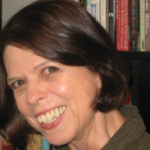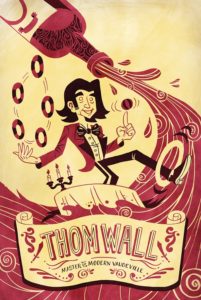PUBLISHED JAN/FEB 2020
by
Deb Vanasse, Reporter,
IBPA Independent magazine --

Deb Vanasse
Opportunities abound for independent publishers to partner with libraries if they take the time to learn the process.
Article Synopsis:
- While libraries differ in policies, budgets, and acquisition procedures, they all have shared interests with indie publishers.
- Publishers should find out which community goals the library fosters and what their key programs are.
- Library programs are a great way for publishers to market authors and their work.
With more than 16,000 outlets nationwide, the United States has far more public libraries than independent bookstores. That affords publishers ample opportunities to partner with libraries on discovery, acquisitions, programming, and the shared goal of instilling a wide love of reading.
“As an aggregator for indie publishers, we love our library partners,” says Mallori Bontrager, digital services manager for the Independent Publishers Group (IPG). “Librarians love the story as much as the publishers do. They encourage their patrons to step out of their comfort zone to find something new and exciting, giving a louder voice to great books from indie publishers.”
Shared Interests, Shared Readers

Veronda Pitchford
To maximize the potential of library partnerships, publishers must get past the common misconception that library sales equate to lost retail sales. “Often the opposite is true,” says Veronda Pitchford, assistant director at CALIFA Group, a nonprofit consortium of 230 California libraries. “Library lovers and book buyers are far from mutually exclusive audiences.”
In fact, many readers first discover books and authors they love through a library. “Whether discussing a book or author with a patron or discussing the same book or author with their colleagues around the country, librarians love reading, sharing what they’re reading, and sharing new authors and new titles,” says Michael Santangelo, deputy director for collection management at the New York Public Library. “Most importantly, many public service, reader’s advisory, and collection development librarians love bringing readers to books they think they will enjoy. What better way to get your book out there and attract new readers than through a profession enthusiastically devoted to books and reading?”

Sari Feldman
Internet discovery pales by comparison, says Sari Feldman, former president of the American Library Association (ALA) and current ALA senior policy fellow. Online aggregators inundate readers with promotions, and they’re not as effective as personal recommendations offered by trained librarians. And as library patrons discover titles and authors they love, they often go on to purchase them as gifts for fellow readers. “People who discover books at libraries are some of the best hand-sellers,” she says.
Of course, libraries also buy books. “Libraries are customers like any other and will contribute to an independent publisher’s revenue,” Santangelo says. Publishers that want to get their titles into libraries need to connect with staff in charge of curation, and, to do that, they need to understand how libraries are structured. At smaller libraries, responsibilities overlap, with staff involved in a variety of activities that include programming, reference, purchasing, and cataloging. In larger systems, book purchasing for the entire system is handled by a specific department such as the collection development, technical services, acquisitions, or material selection.
Expect libraries to differ in policies, budgets, and acquisition procedures. As Feldman points out, bulk purchases may be done through distributors, but many libraries can also acquire directly from publishers or even purchase titles from online retailers such as Amazon. Digital delivery services like OverDrive also allow libraries to purchase content to add to their digital collection.

Michael Santangelo
Getting books reviewed in the major publications such as
Library Journal,
School Library Journal,
Booklist,
Horn Book,
Foreword Reviews,
Publisher’s Weekly, and
Kirkus will increase library interest, says Santangelo. To learn more about how librarians keep up on new titles and which books are getting the most buzz, he suggests publishers check out EarlyWord, a site billed as The Publisher | Librarian Connection. On EarlyWord’s monthly Twitter Galley Chat, publishers can also find new ways to promote their books, he says.
Many libraries are looking to build their collections in popular content areas such as romance fiction, Feldman says, and they know that many of the new releases are coming from independent publishers. Acquisition opportunities are also especially good when a publisher represents local authors, she adds.
Pitchford suggests innovative ways publishers can bring their books to a librarian’s attention. They might suggest book lists pairing recommended titles with television shows, or they might propose music playlists associated with their books. Publishers might also suggest titles that help librarians fill “content deserts”—for instance, books in languages other than English, or books that address underserved readerships, such as American Indian children’s literature and young adult literature featuring Muslim protagonists.
The online platform Biblioboard offers a streamlined, tech-centric way for independent publishers to share their digital content with libraries. In contrast to e-book lending systems that effectively punish libraries for getting more people to read, Biblioboard offers an unlimited, simultaneous use lending model that Mitchell Davis, CEO of parent company BiblioLabs, touts as “the first true path to sustainability for both libraries and copyright holders.”
“We work directly with public libraries in helping them collect and archive all the local indie books in their own communities,” Davis says. “When these books are collected, they are then passed along to curation partners across the industry, including editorial boards of librarians that are looking for the best indie books. A small percentage of these are made ‘Indie Author Project Select’ books as chosen by these industry professionals. When these books are elevated, they become part of commercial collections that generate royalties for the participating authors. Because libraries are invested in these books, they tend to promote them heavily, resulting in both royalties and expanded readership for the participating authors.”
Hybrid publisher BHC Press facilitates library partnerships through a new program that offers libraries exclusive content, display materials, book club guides, digital review copies, and discounts on orders. “Even more than retailers, libraries play a pivotal role in helping to spread the word of new authors and new books,” says BHC owner Joni Firestone.
Citing an early success of the program, Firestone reports that one BHC title was on the shelves in over 50 libraries on release day, including five copies at the New York Public Library. “It was very exciting,” she says. “It allows this book and author to be discovered by so many more people for a longer period of time than at a retailer.”
In the Spotlight

Ann M. Bentley, circulation manager at the Santa Fe Public Library’s Southside Branch.
Library programs are another great way for publishers to market authors and their work, Feldman says. “Even a one-person shop might be able to do programming where they talk about journey to publication and potentially sell books at events,” she says.
Mary Neighbour, owner of Media Neighbours, has had success with this type of event, organizing an Indie Author Day at a branch library in Santa Fe, New Mexico. Neighbour collaborated with Ann Bentley, the library’s circulation manager, to develop a program that included a keynote by IngramSpark director Robin Cutler, a workshop on metadata, a library Q&A, a NaNoWriMo speedwriting challenge, a meet and greet, and author readings. “We are already talking about Indie Author Day next year,” Neighbour says.
Publishers might also propose subject-driven programming on popular topics such as health and wellness or personal growth. In Feldman’s experience, some of the best attended events feature local bestsellers in programs promoted by library social media, which users can trust. There are real dollars attached to library marketing efforts, Feldman points out, with in-house and online library displays often proving as impactful as other publisher marketing investments at a fraction of the cost.

Modern Vaudeville Press owner/author Thom Wall attests to the benefits of partnering with libraries on programming.
Modern Vaudeville Press owner/author Thom Wall attests to the benefits of partnering with libraries on programming. A former Cirque du Soleil juggler, Wall sent the director of events at the St. Louis Public Libraries a detailed proposal for a World Juggling Day event featuring his book
Juggling: From Antiquity to the Middle Ages.
Impressed with the proposal, library staff scheduled a show and book release party at a branch with a large event space. Two hundred people attended. “We were hoping to sell some books, generate interest in our imprint, and get some good traditional media coverage about the event,” Wall says. “We achieved all of these goals.” As a direct result of the library program, Wall was also invited to speak at a Tedx event a few months later.
Wall advises publishers to make it easy for libraries to host their events. “Give them everything they need in order to promote you—press releases, photographs, and copies of the book to include in their collection,” he suggests.
Charlotte Digregorio of Artful Communications Press has given writing workshops, held writing festivals, and exhibited illustrated poetry at libraries throughout the Chicago metro area. “If you get one library engagement, it snowballs into another,” she says. At her workshops, she has met patrons who have asked her to give workshops and talks at schools, businesses, associations, and alumni groups. Every two years, she cycles back to the same libraries to schedule new events. Rather than rely on staff to do all the publicity, she makes media contacts herself.
To stay up on what’s happening at the libraries in her market area, Digregorio subscribes to their email newsletters. “Librarians should be your best professional friends,” she says. “They tend to be pretty helpful. You won’t be intimidated. Always take the approach that they will benefit from your programs, and they will.”
Do This, Not That
Though Pitchford admits it sounds ironic, she urges publishers to do their research before proposing library partnerships. Find out which community goals the library fosters and what their key programs are, then consider how the publisher’s target audiences match up.
Lucinda Clark, managing editor at P.R.A. Publishing, engaged with her local libraries through the ALA’s United for Libraries division, an association of library trustees, advocates, friends, and foundations. “Once we started working with the staff, opportunities of all kinds presented themselves,” Clark says. P.R.A. has participated in library-sponsored literary festivals, hosted awards ceremonies for their annual poetry contests, and conducted workshops and poetry readings at local libraries.
Santangelo suggests publishers also consider simple ways to let libraries know about new releases. Short, easy-to-read emails and social media announcements are a sure bet, he says, especially if they’re issued seasonally so as not to overwhelm staff that receive lots of book news. “It would be great if more independent publishers worked together to pool their resources,” he adds, noting the effectiveness of joint announcements and webinars to promote new releases.
In any case, publishers should be mindful of the many demands made on library staff. “People who work in libraries get many announcements for new books, services, supplies, and technology. They receive many phone calls and requests for meetings, all while they are doing daily programs, performing outreach around the community, working reference desks, cataloging books, ordering books and supplies, and working with local government,” he says. “A person who is trying to speak with them to sell a book or the new fall titles list becomes part of their tasks—and not necessarily in a good way.”
Publishers also need to recognize that libraries must work within budgets to provide a wide range of services to the community, Feldman notes. They often can’t pay authors to give a free talk, and they may not have funds to take a chance on new titles.
“A publisher may see a library system with 50 branches and think a library will purchase 50 copies of a book, but this is rarely the case,” Santangelo says. “Libraries do not have the budgets to buy so widely and often purchase a small number of copies for first-time authors or less popular subjects. Large purchases are for guaranteed bestsellers, but that does not mean those books are any nearer to our hearts just because we have bought many copies. Our book selection is a balance between titles, subjects, and authors our patrons are requesting and titles, subjects, and authors that we think they would like.”
Wendy Jones of Ida Bell Publishing recognizes these limitations. “Across the nation, many library budgets have been cut,” she says. “So always offer libraries free programs.” Beginning with a book launch of the company’s debut publication, Ida Bell’s creative library partnerships have grown to include three Indie Author Days, two Black History Month Programs, and a star-on-the-wall donation to celebrate the publisher’s third anniversary.
At the Intersection

Publisher display tables at an Indie Author Day at a branch library in Santa Fe, New Mexico. Pictured, from left: Jared Gan, president of the New Mexico Book Association; David Froebel of Newvo Peace Publishing; unidentified; author William Lee Valentine; and Maxine Neely Davenport and Roberta Parry, authors with Homegrown Authors.
Like publishers, librarians know books, and they know readers. They know what communities need and read. As reader expectations and ways of accessing books evolve, librarians recognize the benefits of working with publishers toward common goals. “We’re at that intersection between information and experience,” says Feldman. “I’ve found tremendous willingness among small publishers to really be great partners.”
Likewise, publishers who understand how libraries make acquisitions and set up programming can leverage that knowledge to address the perennial problem of discovery and stretch their marketing dollars. They’ll also enjoy the intangible benefit of allying with professionals who love books as much as they do.
“Librarians are generous, knowledgeable, community-driven professionals who want to find new and better ways to help the community thrive,” Neighbour says. “Publishers who realize this will be able to approach any librarian and start a relationship. That’s all it takes."
Deb Vanasse is the author of 17 books. Among her most recent are the novel Cold Spell
and a biography, Wealth Woman: Kate Carmack and the Klondike Race for Gold.
She also works as a freelance editor.
Learn more about this topic:
Library